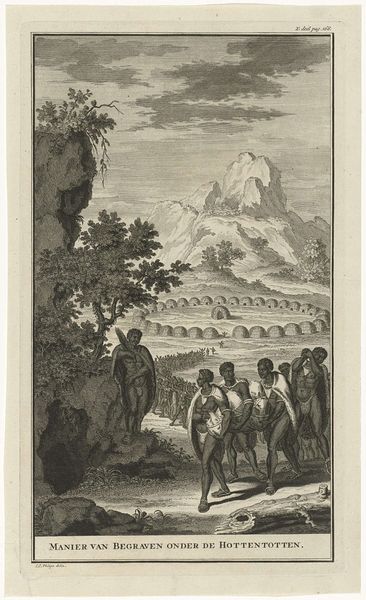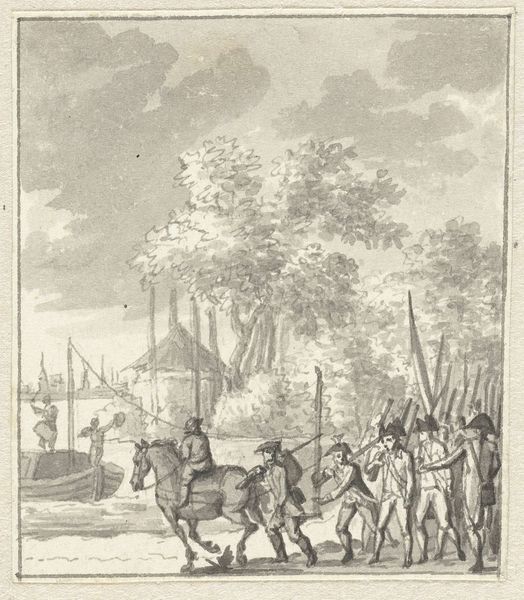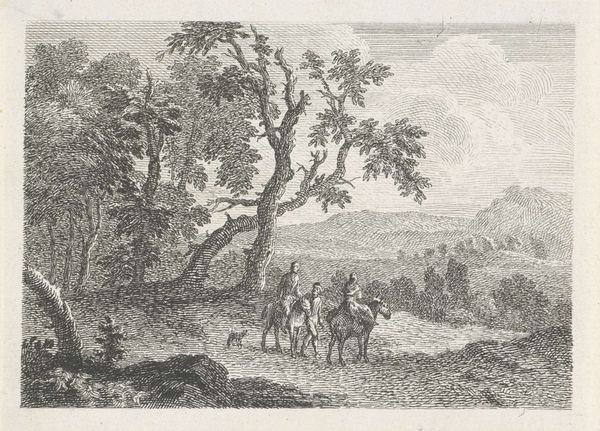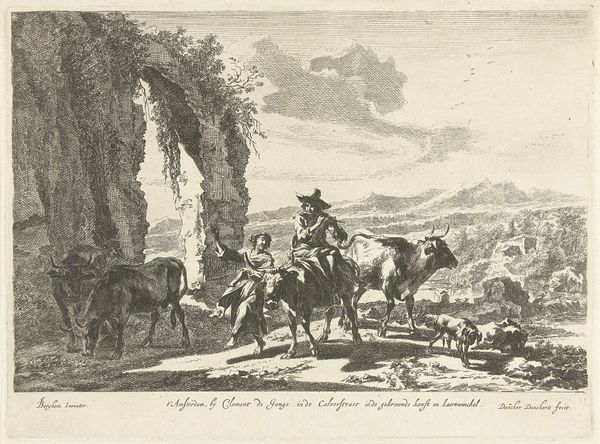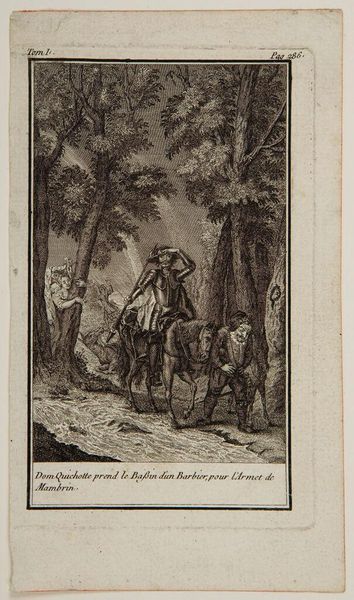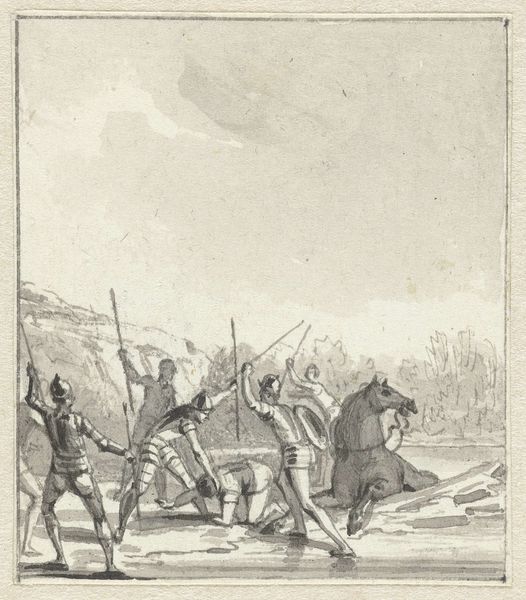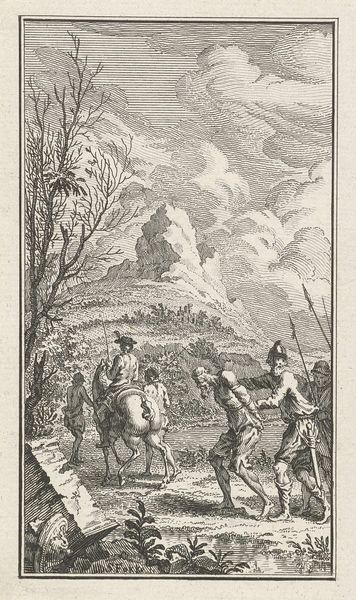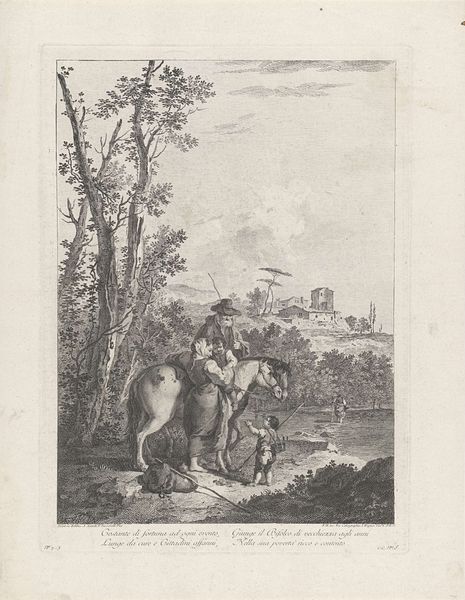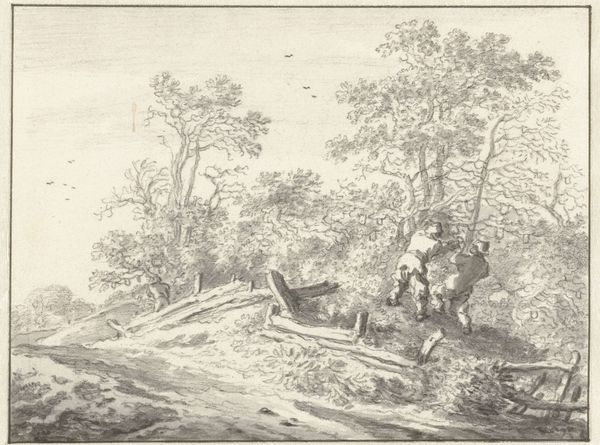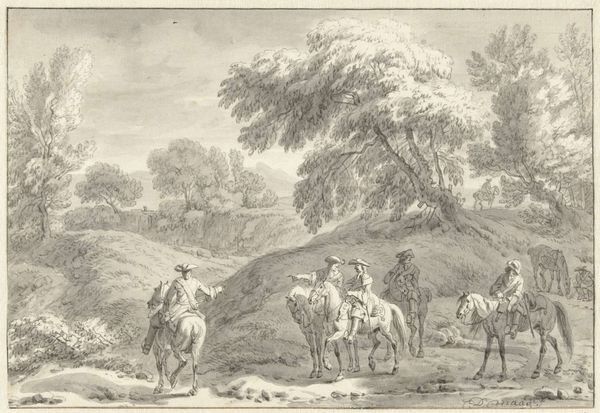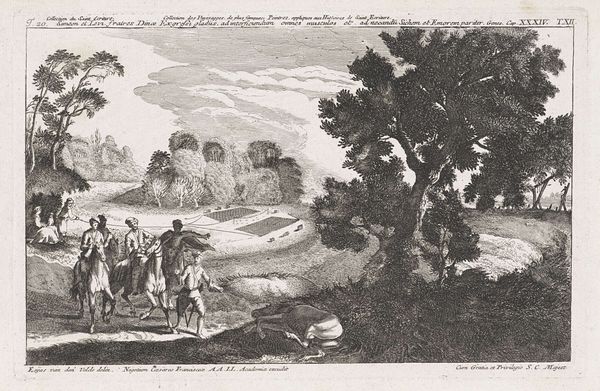
drawing, print, engraving
#
drawing
#
pen drawing
# print
#
landscape
#
genre-painting
#
history-painting
#
engraving
Dimensions: height 298 mm, width 175 mm
Copyright: Rijks Museum: Open Domain
Editor: Here we have "Khoikhoi die zijn akker bewerkt," or "Khoikhoi working their field," an engraving by Jan Caspar Philips from 1727. It depicts agricultural scenes, and it makes me think about the way land and labor are represented. What do you see in this piece? Curator: I'm drawn to the immediate foreground – the implements of labor so sharply rendered. Notice how the plough is given prominence; it’s almost a character in itself. This emphasizes not just the act of cultivation, but the material tools *enabling* that cultivation. It really forces us to think about the materials used to manufacture the tools and the means of production used to control labor at the Cape. Editor: That’s fascinating! I was focused more on the figures. Curator: Yes, but consider their positioning and how their labour is portrayed. There’s a clear hierarchy depicted – look at the individual walking behind the first labourer leading the oxen. Are they indigenous? Is their positioning a comment on their relationship to ownership of the materials and means of their production and labour? I think the piece compels us to ask, who benefits from this agricultural endeavor? Editor: I hadn’t thought about it that way. It’s easy to see it as just a landscape, but there's a real focus on power structures in how it portrays materials and labor. Curator: Exactly! And that shifts how we interpret the scene entirely. Even something like the type of wood used for the plow construction would suggest specific resources, trade routes, and the power dynamics inherent in resource extraction. Editor: This makes me think about how prints like this could have been used to justify colonization, by presenting a specific view of labor. Curator: Precisely. Focusing on the materiality and its context is a means to explore labour conditions in former dutch colonies. I hadn't considered it like this before!
Comments
No comments
Be the first to comment and join the conversation on the ultimate creative platform.
